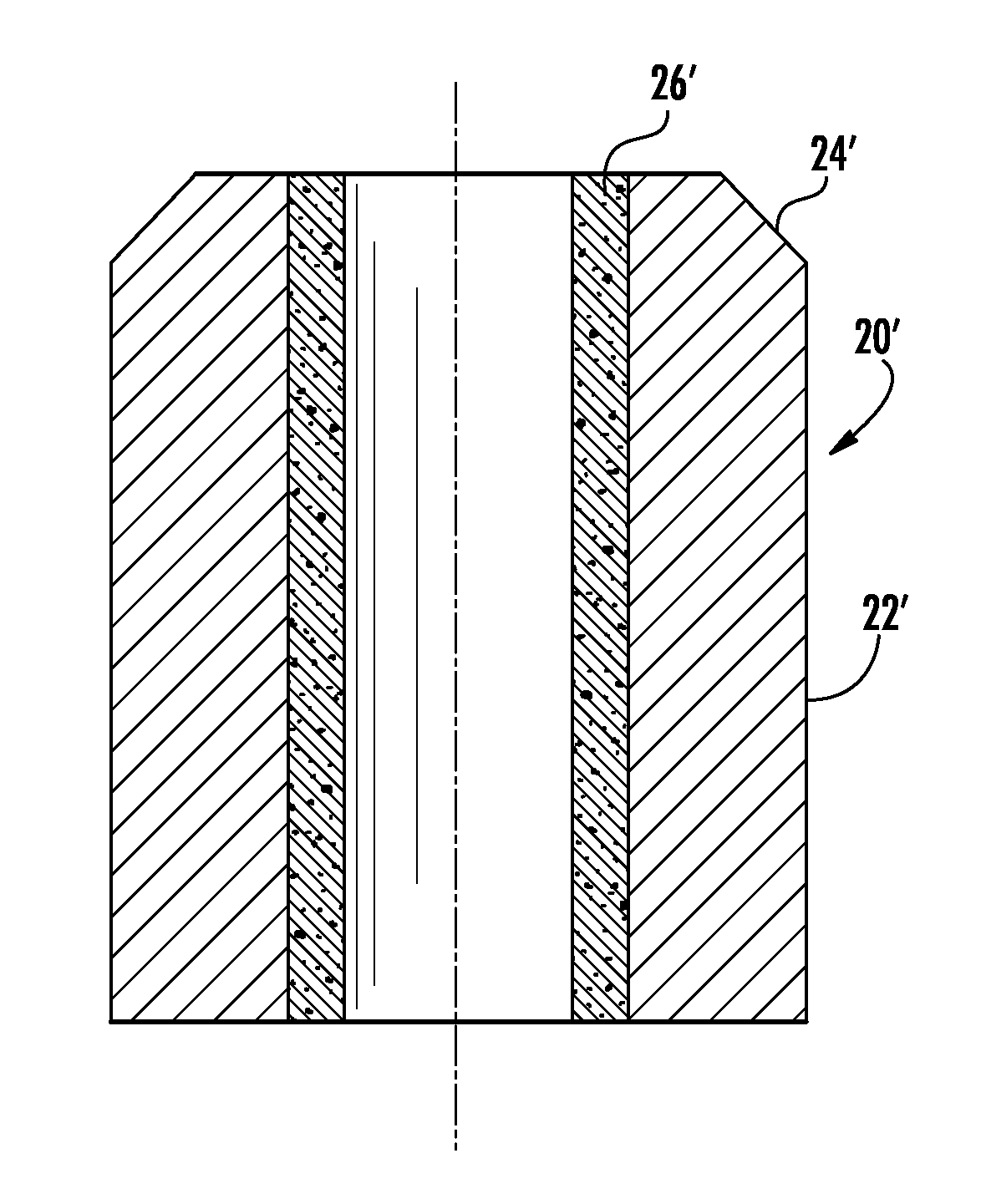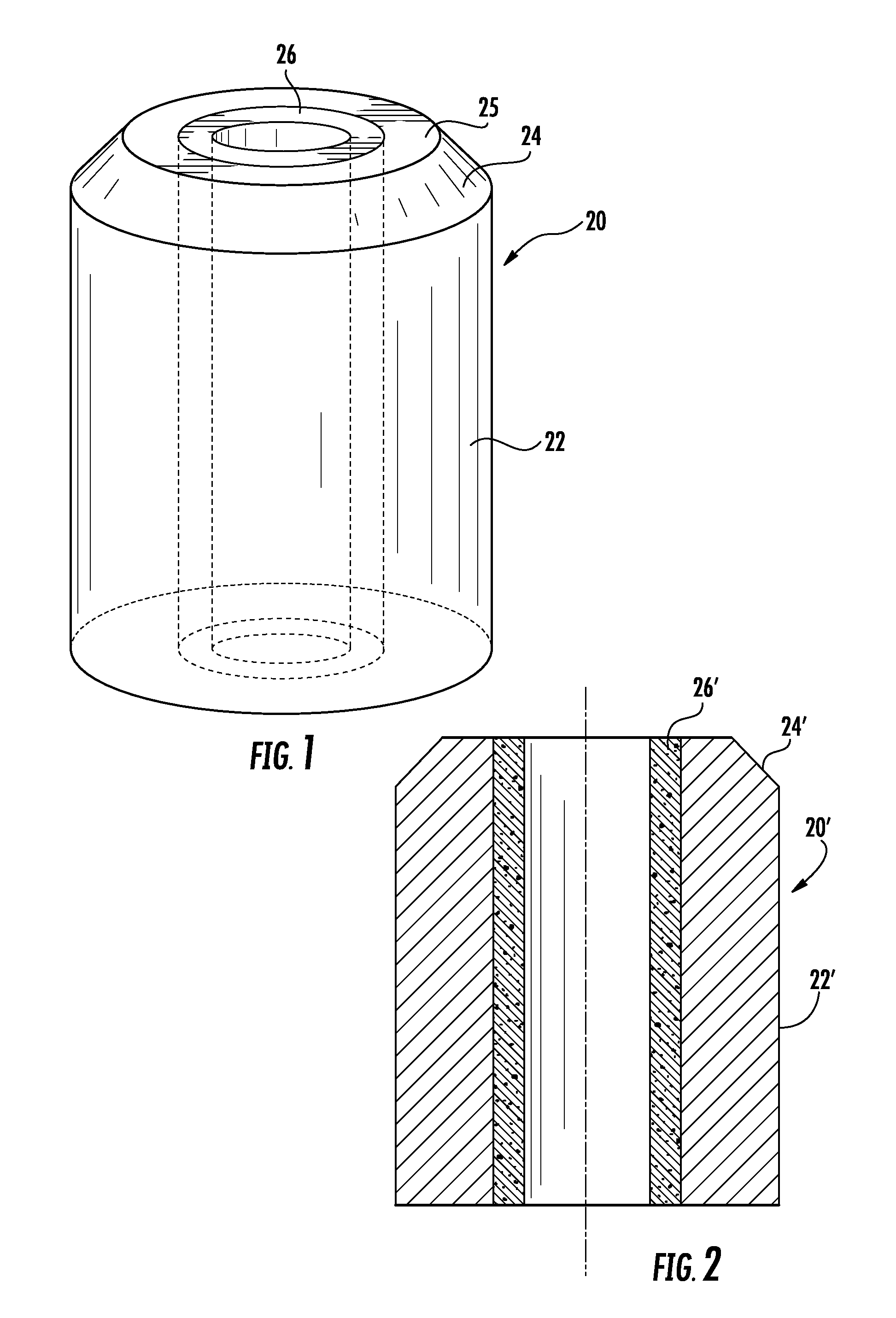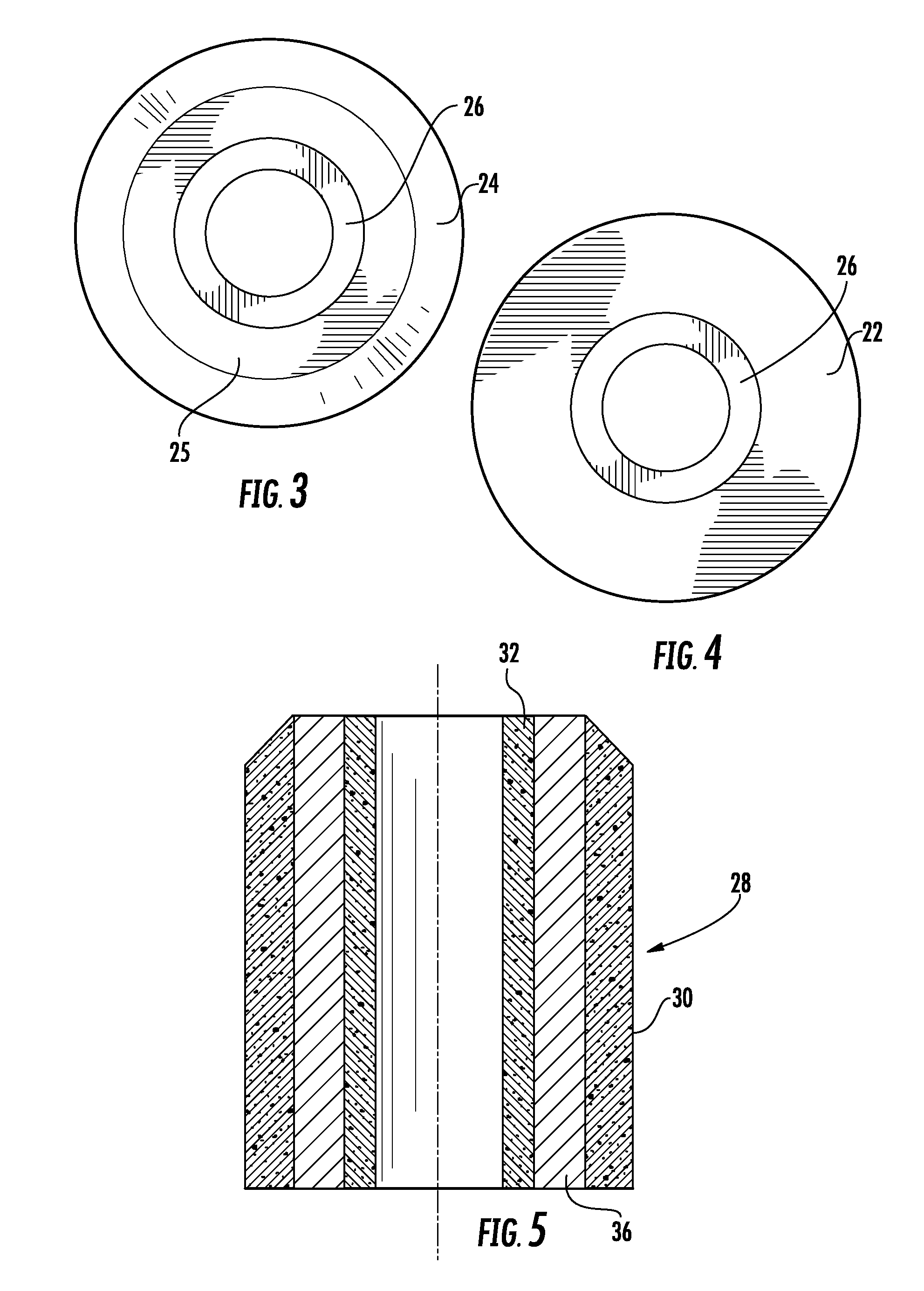Methods for Manufacture and Use of Composite Preform Having a Controlled Fraction of Porosity in at Least One Layer
a composite preform and fraction of porosity technology, applied in the field of composite preforms, to achieve the effect of reducing the probability of failur
- Summary
- Abstract
- Description
- Claims
- Application Information
AI Technical Summary
Benefits of technology
Problems solved by technology
Method used
Image
Examples
Embodiment Construction
[0038]The invention can best be understood with reference to the specific embodiment that is illustrated in the drawings and the variations described hereinbelow. While the invention will be so described, it should be recognized that the invention is not intended to be limited to the embodiments illustrated and described. On the contrary, the invention includes all alternatives, modifications, and equivalents that may be included within the spirit and scope of the invention as defined by the appended claims.
[0039]FIG. 1 shows generally at 20 in a perspective view a representation of a hollow, cylindrical bi-component composite billet of the invention. Billet 20 has an outer surface or sleeve 22 of American Iron and Steel Institute (“AISI”) 8620 steel in wrought condition at full density. The sleeve is tapered at one end to form a conical section 24 for entry into an extruder for plastic deformation (not shown in this view). The conical section is chamfered to a flat top surface 25. ...
PUM
| Property | Measurement | Unit |
|---|---|---|
| Length | aaaaa | aaaaa |
| Length | aaaaa | aaaaa |
| Length | aaaaa | aaaaa |
Abstract
Description
Claims
Application Information
 Login to View More
Login to View More - R&D
- Intellectual Property
- Life Sciences
- Materials
- Tech Scout
- Unparalleled Data Quality
- Higher Quality Content
- 60% Fewer Hallucinations
Browse by: Latest US Patents, China's latest patents, Technical Efficacy Thesaurus, Application Domain, Technology Topic, Popular Technical Reports.
© 2025 PatSnap. All rights reserved.Legal|Privacy policy|Modern Slavery Act Transparency Statement|Sitemap|About US| Contact US: help@patsnap.com



